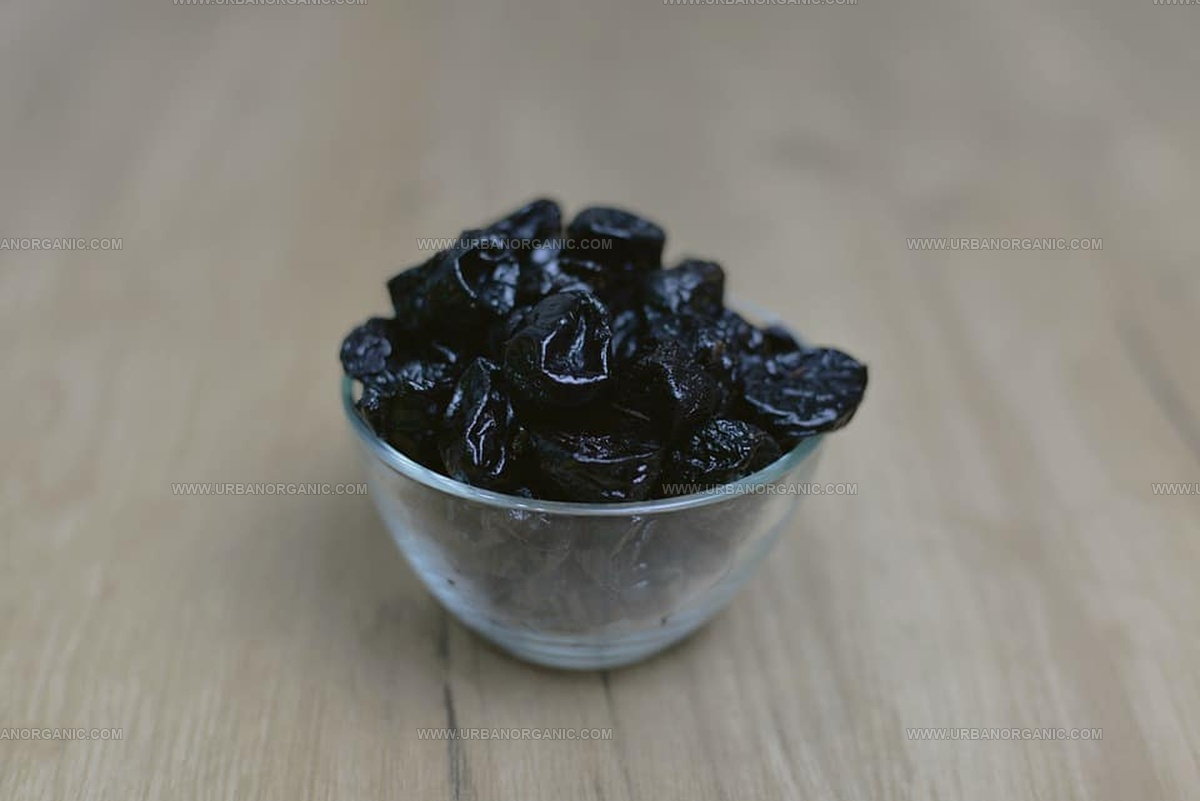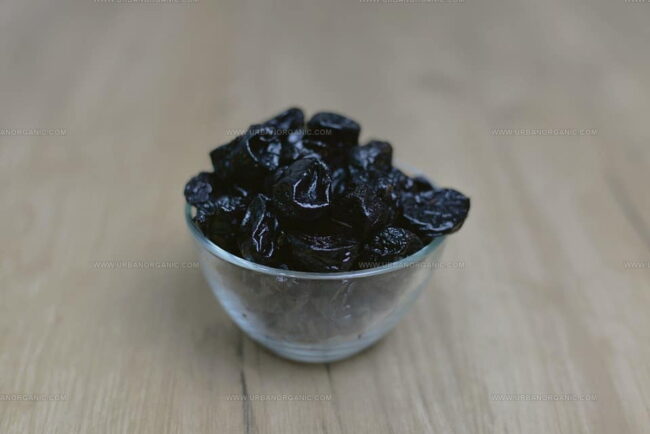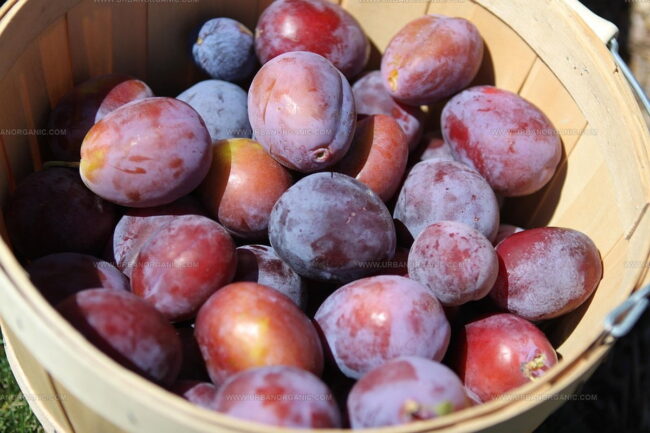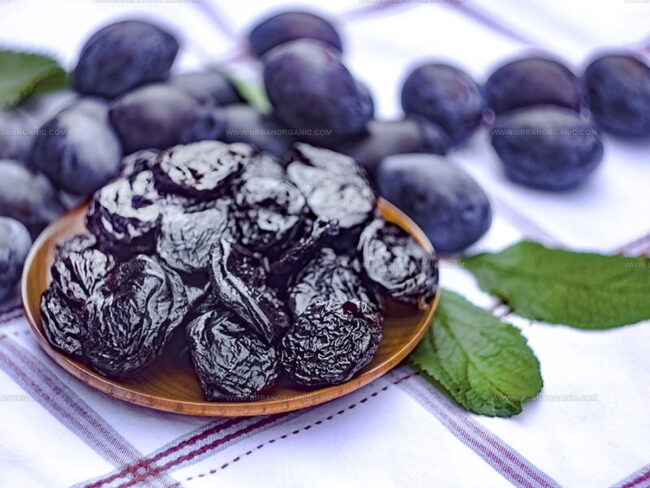What Do Prunes Taste Like? Sweet, Deep, and Naturally Rich
Prunes, those wrinkly dried plums, often spark curiosity among food enthusiasts and health-conscious individuals.
Carrying a reputation that extends far beyond their modest appearance, these fruits invite deeper appreciation.
Some people approach prunes with hesitation, uncertain about their flavor profile and culinary potential.
Their unique characteristics make them a fascinating subject for those eager to expand their palate.
Nutritionists and chefs alike recognize prunes as more than just a simple dried fruit.
The complex nature of prunes invites you to uncover their surprising qualities and potential uses.
Let's dive into the intriguing world of prunes and unravel their delicious mysteries.
What Are Prunes?
Prunes come from European plum trees where pits pop out easily compared to fresh plums.
Louis Pellier brought La Petite dAgen plum from France to California in 1856.
Pellier grafted his French plum tree onto an American plum tree, which now supplies most American prune crops.
People know this tree as Improved French plum.
Making one pound of prunes needs up to three pounds of fresh plums.
Prune makers tried calling their product plum raisins or dried plums for a few years.
People linked prunes with older folks because of digestive help.
Sellers wanted younger people to like prunes.
Their plan did not work well.
California prune makers now call them prunes without shame.
Taste of Prunes
Prunes pack a sweet punch, and despite coming from dried plums, they don't always taste like typical fresh plums.
Prune flavors change depending on which plum variety was used, ranging from super sugary to subtly sweet.
Sampling before adding to a recipe helps you understand its unique taste.
Some prunes carry hints of brown sugar or molasses in their flavor profile.
Dessert makers can swap these prunes into recipes instead of standard sweeteners.
Certain prunes have a gentle honey-like essence, which comes across as more understated and delicate.
Sweetness levels shift across different prune types, with some bursting with sugar while others offer a more mellow note.
People who enjoy softer textures will appreciate prunes with a tender, smooth consistency.
Dried vs. Fresh Prunes: Flavor and Uses
Dried prunes are sweet, chewy, and have a rich, deep flavor, while fresh prunes (also called plums) taste juicy and a bit tart with a lighter, fruity taste.
Dried prunes are often used in baking, trail mixes, and for snacking because they are shelf-stable and packed with fiber.
Fresh prunes are great for eating on their own, adding to salads, or using in desserts that call for a fresh, juicy fruit.
Both are good for digestion, but dried prunes are more concentrated in natural sugars and nutrients since the water is removed.
Choose dried prunes for a sweet, chewy bite or longer storage, and go for fresh prunes if you want something juicy, refreshing, and lighter tasting.
Are Prunes Bitter or Sweet?
Good news about prunes comes from how their flavor changes during drying.
When plums turn into prunes, their skin stops being bitter.
Prunes taste much sweeter compared to fresh plums, which many people enjoy.
Sweet prunes work well in desserts and help balance other dishes with strong flavors.
Most people can munch on prunes without worrying about any harsh or unpleasant taste.
Do Prunes and Raisins Taste the Same?
Prunes and raisins share a similar taste.
Raisins come from dried grapes, while prunes are dried plums (specifically dried Thompson seedless grapes).
Prunes contain more sugar, which makes them taste sweeter.
People can swap prunes for raisins in most recipes with similar results.
Beyond sugar content, these dried fruits are quite alike.
Biting into a raisin brings sweetness and a touch of tartness.
Prunes start with sweetness and then add a sour punch.
Prunes contain fructose, and grapes have glucose.
Fructose helps liver process carbohydrates and can clear toxins from bodies.
Glucose quickly raises blood sugar and removes helpful nutrients and proteins.
Fructose does not cause these same problems.
Comparing Dates and Prunes
Sweet and sticky fruits like dates and prunes share many characteristics. Both options come packed with helpful nutrients for people.
Key points about these tasty treats include:
Dates rank among top fruits in popularity within United States markets. People love them because they taste good and contain multiple vitamins.
Prunes often get confused with dates by many shoppers.
Prunes consist of dried plums with soft centers that lack seeds.
Their size differs from typical date fruits found in current food selections.
Multiple color variations exist for both fruits.
Health benefits remain consistent across different types. Fiber and antioxidant qualities make these fruits excellent nutrition sources.
Dates carry significant nutrient levels but also include processed sugars during production.
Prunes hold more moisture compared to dates and do not taste as sweet.
Chewing prunes feels easier because of their water content.
Specific details about these fruits include:
Nutrition experts recommend both fruits as healthy alternatives to processed snacks.
People who want natural energy boosters might consider adding dates or prunes to their regular diet.
Can Prunes Cause Gas?
Prunes pack lots of fiber, which leads many people to think they cause gas.
Like most good tales, this story gets blown out of proportion, and prunes don't actually trigger more gas than other high-fiber foods.
People have believed this myth about prunes for years, even though they count as a healthy choice because of their high fiber content.
Rumors started with an old laxative product ad that highlighted prunes' fiber levels as a selling point.
Some individuals might experience gas from prunes, but it usually isn't uncomfortable.
Prunes contain FODMAPs, which are sugars (Fermentable Oligosaccharides, Disaccharides, Monosaccharides, and Polyols).
These sugars don't absorb well in stomachs, and certain people lack specific enzymes to break them down.
Gas happens because of this digestive process.
Are Prunes a Natural Laxative?
Prunes work wonders for your digestive system.
Their high fiber content helps keep things moving smoothly in your body.
Medical experts consider them a natural laxative.
Potassium inside prunes relaxes intestinal muscles, which makes passing stool much easier.
Prunes can trigger a bowel movement and soften existing stool in your gut.
Beyond basic digestion, prunes serve as an important health food that tackles constipation problems.
Vitamin A found in prunes increases intestinal movement and acts like a mild stimulant.
These qualities make prunes helpful for people struggling with tight or difficult stools that won't pass completely through the colon.
Prunes offer multiple health benefits beyond digestion.
Heart health improves with regular consumption.
Potential anti-cancer properties exist in these small fruits.
Potassium supports overall digestive wellness.
People can eat prunes daily or drink prune juice to enhance bowel function and maintain digestive health.
Do Dried Prunes Expire?
Prunes pack a natural sugar punch that helps calm stomach acid.
High fiber and their dried state make prunes simple to digest.
Regular fruits might spoil quickly, but prunes last longer.
Some flavor changes can happen over time as their oils break down, which might shift their look and taste.
Prune freshness depends on harvest time.
These sweet fruits have low acid levels and can sit in your pantry for months.
Sliced prunes left out might turn soft and go bad within days.
People can keep prunes fresh by selecting quality fruits and storing them correctly.
Bad storage means quick spoiling for these dried treats.
Vacuum-sealed prunes with oxygen absorbers can stay good for ten years.
Shop-bought prunes exposed to air will decay faster.
Once you open a package, keep them in a sealed container at room temperature.





Michael Thompson
Founder & Culinary Director
Expertise
Classical & Contemporary Cooking Techniques, Global Cuisine Appreciation, Nutrition & Menu Engineering, Sustainable Cooking Practices, Farm-to-Table Cuisine
Education
Southwestern Oregon Community College
Michael grew up in Oregon, where he learned early that food tastes better when it’s fresh, local, and made with care.
After earning his degree from the Southwestern Oregon Community College, he focused his career on teaching others how to cook with the seasons, reduce food waste, and reconnect with what’s on their plate.
Michael keeps his cooking simple, sustainable, and full of flavor. His favorite part of the process? Watching people realize how easy and satisfying it can be to cook a single great meal from scratch.